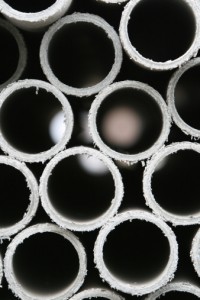Methods for Asbestos Testing
Find out how asbestos samples get taken and tested

Air Testing
Asbestos air testing is very useful because it tests for the most dangerous form of asbestos—airborne fibers or particles which can be inhaled. The first step in this testing method is for a professional technician to collect an air sample from your home using a specially calibrated sampling pump that has a mixed-cellulose ester filter. Any airborne fibers will be trapped in the filter and therefore captured for later examination using a technique called Phase Contrast Microscopy (PCM). PCM involves viewing the sample under a microscope and counting the fibers. However, PCM cannot distinguish between different types of fibers so if contamination from other fibrous materials like fiberglass or gypsum is likely, additional testing will be required to identify asbestos fibers specifically.
Materials Testing
If you need to know whether or not a particular material such as ceiling tile or insulation contains asbestos, materials testing must be used. The first step is for a skilled technician to remove a small sample of the material and secure it in a glass vial. Care must be taken to avoid creating any unnecessary dust or fragments as the sample is removed, and the hole that is left in the material should be sealed with an encapsulant to prevent further damage or fiber release. The sample will be taken to an authorized lab where it will be prepared for review. PCM may be used at this point, but the technicians may also skip straight to techniques like electron microscopy and polarized light microscopy. These techniques enable the differentiation of asbestos fibers from other types of fibers.
After Asbestos Testing
If your home tests positive for asbestos—especially airborne asbestos—you will want to take action right away to eliminate the contamination. This can be accomplished with the help of an expert asbestos management company that can create a plan for the safe removal and disposal of the asbestos-containing materials.










